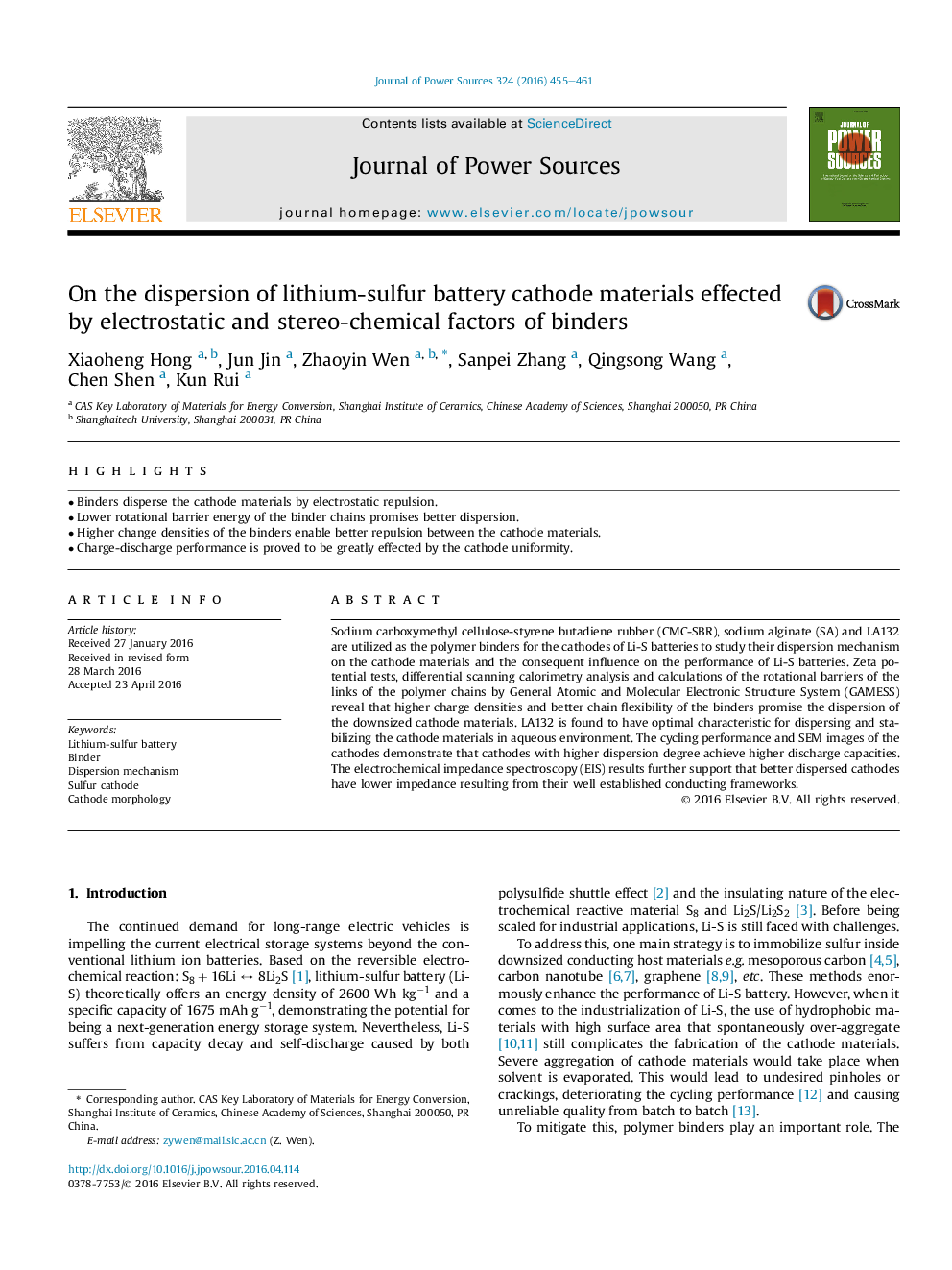| Article ID | Journal | Published Year | Pages | File Type |
|---|---|---|---|---|
| 7727630 | Journal of Power Sources | 2016 | 7 Pages |
Abstract
Sodium carboxymethyl cellulose-styrene butadiene rubber (CMC-SBR), sodium alginate (SA) and LA132 are utilized as the polymer binders for the cathodes of Li-S batteries to study their dispersion mechanism on the cathode materials and the consequent influence on the performance of Li-S batteries. Zeta potential tests, differential scanning calorimetry analysis and calculations of the rotational barriers of the links of the polymer chains by General Atomic and Molecular Electronic Structure System (GAMESS) reveal that higher charge densities and better chain flexibility of the binders promise the dispersion of the downsized cathode materials. LA132 is found to have optimal characteristic for dispersing and stabilizing the cathode materials in aqueous environment. The cycling performance and SEM images of the cathodes demonstrate that cathodes with higher dispersion degree achieve higher discharge capacities. The electrochemical impedance spectroscopy (EIS) results further support that better dispersed cathodes have lower impedance resulting from their well established conducting frameworks.
Related Topics
Physical Sciences and Engineering
Chemistry
Electrochemistry
Authors
Xiaoheng Hong, Jun Jin, Zhaoyin Wen, Sanpei Zhang, Qingsong Wang, Chen Shen, Kun Rui,
